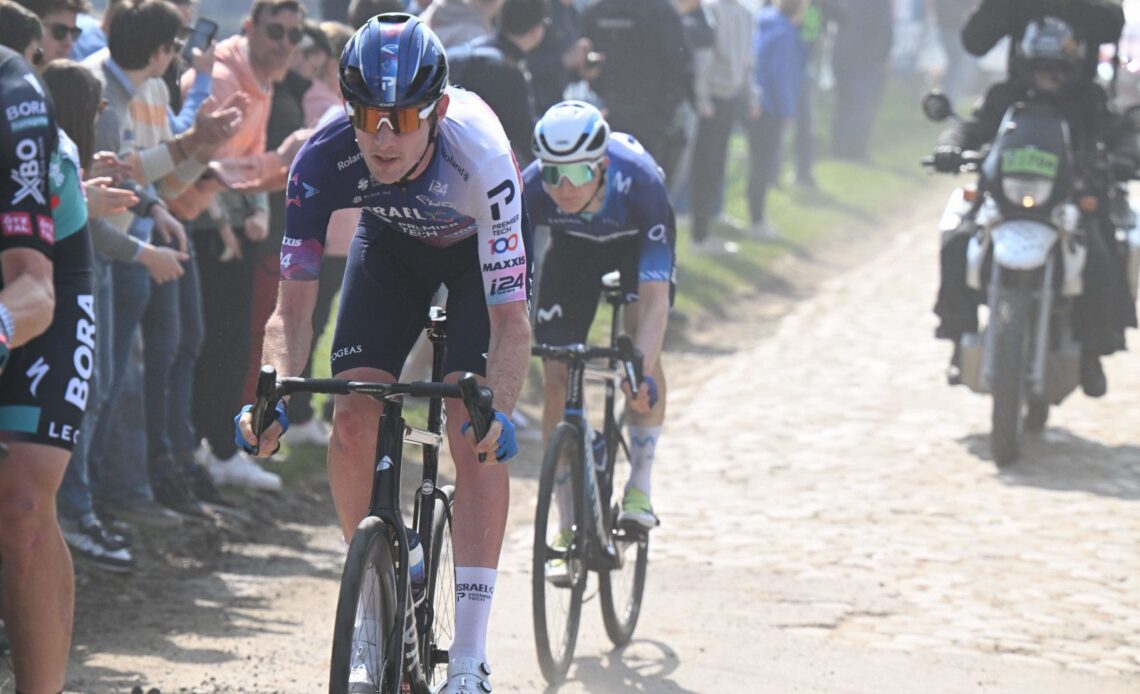The battle for position leading up to the Arenberg forest, a 2.3-km long straight shot of brutal cobbles, can be fierce and dangerous. Riders will hit 60 km/h and teams form leadout trains to get their leaders to the front. Elbow-to-elbow, full gas, and with plenty of risks taken.
That may change for this year’s edition, according to the organizer, Amaury Sports Organization (ASO).
ASO’s Thierry Gouvenou is well aware of this. “I’ve ridden here twelve times, and twelve times I’ve arrived to the start Arenberg forest wondering how I’m going to get to the front,” he said.
According to a request of the riders’ union, the C.P.A. (Cyclistes Professionnels Associés), the director of Paris-Roubaix is trying to come up with an 11th hour solution to protect riders, according to l’Equipe.
“The principle is to find corners to slow down the field and make it longer, a bit like the chicanes system on motor racing circuits,” Gouvenou said. “Currently, they are coming at about 60 km/h in the Arenberg section, if they could slow down to 30-35 km/h, it would be less risky. And it would highlight the difficulty of the gap because the runners would arrive without momentum.”
While still in discussions with local authorities, the inclusion of this obstacle introduces uncertainties. The prospect of an entire peloton suddenly decelerating before a crucial sector, where positioning is crucial, also poses a risk of potential harm. ”
“I wrote to the riders, warning them that there would be more braking before the Pavé,” Gouvenou said. They told me that they would rather brake hard at the risk of falling on the tarmac than enter the cobbles at 60 km/h.”
Alison Jackson has the perfect TikTok for her Paris-Roubaix pavé
The former pro anticipates announcing the specifics and formalization of this system shortly, yet he urges a broader consideration regarding the surge in crashes, stemming from escalating speeds in recent years. He acknowledges riders’ apprehension, noting their plea for heightened safety measures when navigating through gaps, a request he deems reasonable.
“The riders are a bit on edge and ask us for a little more security to enter the gap, it doesn’t seem illogical to us,” he says. But we may need to think about the longer term, especially the equipment that explains some crashes.”
Derek Gee, for example, was in the lead break when he entered section 19. Then, things went from great to terrible…fast. The IPT…
Click Here to Read the Full Original Article at Canadian Cycling Magazine…

